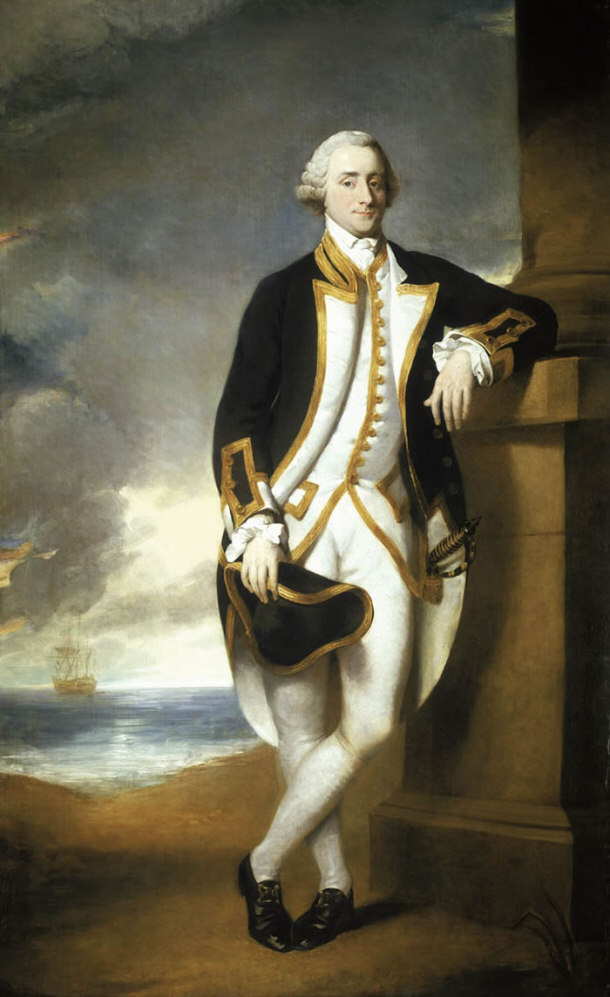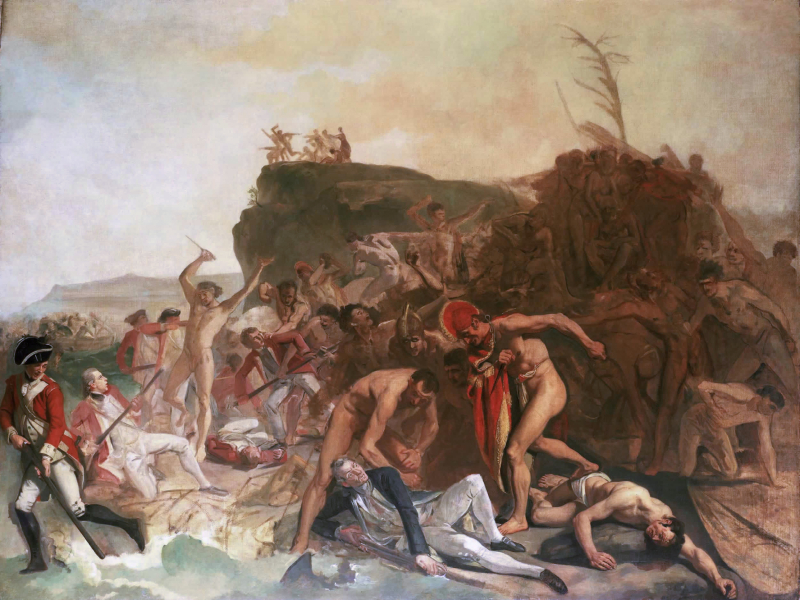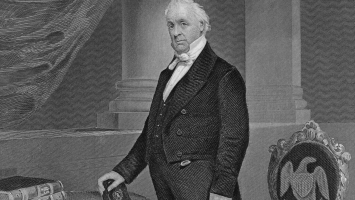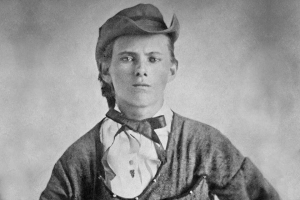Top 12 Interesting Facts about James Cook
One of the most well-known historical characters from the Age of Exploration is James Cook. Before his terrible death in 1779, the captain spent the middle of ... read more...the 18th century exploring large areas of the South Pacific that no European had ever seen. These 12 interesting facts about James Cook might help you learn more about the illustrious sailor's past.
-
James Cook was the Scottish immigrant farmworker's son. When Cook was still a child, his father took over as the foreman of a farm in a nearby community. Early indications of James' curious and intelligent mind led to the village's employer paying for his tuition there until he was 12 years old. Although he spent his early adolescence on the farm where his father worked, he came into contact with ships and the sea during a brief apprenticeship in a general shop in a seaside community north of Whitby.
At the age of 17, Cook won an apprenticeship with a merchant sailing firm after having previously worked on a farm in Yorkshire. He began his career as a mariner on shipping expeditions in the stormy North and Baltic Seas, and he spent the following ten years moving up the ranks and perfecting navigation. He was being trained to become a captain, but in 1755, he surprised his mentors by leaving his job as a merchant seaman and joining the British Royal Navy as a common seaman instead.
Cook may have joined the Royal Navy at the very late age of 26, but it took him just two years to advance from able seaman to ship's master. He was able to perfect the navigation and mapping abilities that were so essential to his success as an explorer throughout his years as a merchant marine apprentice and his service during the Seven Years' War. Later in his career, he gained such a reputation that sailors from rival nations were advised to avoid him if they came across him at sea.

history.com 
history.com -
Cook served as master of the inferior Navy ship HMS Pembroke during the Seven Years' War in North America. He participated, along with other members of Pembroke's crew, in both the siege of Quebec City in 1759 and the significant amphibious attack that liberated the Fortress of Louisbourg from the French in 1758. He showed an aptitude for surveying and cartography during his service and was in charge of mapping much of the Saint Lawrence River entry during the siege, enabling General Wolfe to launch his renowned covert attack during the Battle of the Plains of Abraham in 1759.
His five seasons in Newfoundland resulted in the creation of the first detailed maps of the island's coasts at a wide scale and the first large-scale hydrographic surveys that used accurate triangulation to determine the locations of land features. Additionally, they enabled Cook to grasp practical surveying under frequently challenging circumstances and brought him to the attention of the Admiralty and Royal Society at a pivotal time for both his career and the advancement of British overseas exploration. Cook's maps were utilized well into the 20th century, and for 200 years, sailors in Newfoundland's waters used copies as a reference. He was given command of his first circumnavigation in part due to his ability to navigate through unfamiliar waters and deliver accurate charts of the areas he explored back home.

history.com 
commons.wikimedia.org -
The conflict between Europe and Asia for control of the oceans began in 1768. In quest of new places to conquer and riches to plunder, Britain, France, Spain, Portugal, and the Netherlands had already spent many decades traveling the world, but the Pacific, and particularly the South Seas, remained completely undiscovered. The British government and the Royal Navy devised a covert strategy to compete to be the first to claim new land: send a naval officer on an ostensibly scientific expedition, then instruct him to embark on a conquest expedition for the mythical Southern Continent. One of the interesting facts about James Cook is that he was selected for the position because he was a Navy captain with experience in cartography and other sciences.
Cook's career as an explorer began in August 1768 when he boarded the HM Bark Endeavour and departed England with close to 100 crew members. Their trip had a covert military purpose, even though it was nominally a scientific one. They were ordered to sail to Tahiti to watch Venus pass across the face of the sun. The "Great Southern Continent," an undiscovered landmass that was thought to be hiding somewhere close to the bottom of the world, was a landmass that Cook carried secret orders telling him to look for.
Following orders, the explorer sailed to the 40th parallel in the south but was unable to locate the rumored continent. He then made a westward swing and circled New Zealand to demonstrate that it was a pair of islands and was not joined to a bigger landmass. During his second voyage around the world, which began in the early 1770s, Cook would later pick up the quest for the Southern Continent. He would almost succeed in spotting Antarctica before pack ice forced him to turn back.

commons.wikimedia.org 
commons.wikimedia.org -
During his first journey, after touching down in Australia, Cook steered his ship north and made for the Dutch harbor of Batavia. He was unaware that he was sailing directly into the Great Barrier Reef's razor-sharp coral structures because he was in an uncharted region. His ship Endeavour collided with a coral reef on June 11, 1770, and started to take on water, putting the lives of his crew and the priceless maps of his Pacific discoveries in peril. His journey was delayed by over seven weeks as repairs were made to the severely damaged ship on the shore (near the docks of modern Cooktown, Queensland at the mouth of the Endeavour River).
The crew's interactions with the local Aboriginal population were generally amicable until Cook ordered bullets to be fired during a fight over green turtles, leaving one local lightly wounded. To lessen the weight of the ship, Cook's crew frantically pumped water out of the holds and tossed cannons and other equipment overboard. They even attempted to patch a hole in their hull using an old sail. They managed to plug the leak after more than 20 frantic hours and limped toward the Australian coastline. Cook's ship wouldn't be seaworthy once more until nearly two months had passed during repairs.
The journey continued on August 22, 1770, at approximately noon, Cook named it York Cape without getting off the ship (now Cape York). Cook turned west after leaving the east coast, guiding his wrecked ship through the treacherously shallow waters of Torres Strait. Cook was looking for a vantage point when he noticed a steep hill on a nearby island. Cook hoped to view "a route into the Indian Seas" from the top of this hill. Cook gave the island the name Possession Island, claiming that it was British territory and that the entire coastline he had recently discovered.

www.nhm.ac.uk 
www.nhm.ac.uk -
Scurvy had a devastating impact on sailors who attempted lengthy ocean trips. The sickness, which is brought on by a lack of vitamin C, did affect several of Cook's crew, but he is credited with having "conquered" it. Fresh fruit, malt, soup, vinegar, mustard, and one particularly vitamin-rich nonperishable food: sauerkraut, were some cure-alls that Cook and his surgeon said helped fight off the sickness. This was mainly due to his fixation on obtaining fresh meals on each of his visits. Cook packed several tons of pickled cabbage on his trips because, despite not knowing the cause or treatment for scurvy, he was aware that it appeared to prevent the sickness. The only issue he had was convincing his team to consume it.
James Cook served sauerkraut to the officers for dinner as a ruse. By making the fermented cabbage at the officer's table, Cook persuaded his crew to consume it, leading the lower-ranking men to believe it was a delicacy and yearn for it themselves. Additionally, his crew brewed spruce beer to stave off scurvy, albeit the boiled drink probably didn't have much vitamin C. At the time, Cook was praised for his anti-scurvy abilities, and the Royal Society even gave him the Copley Gold Medal in 1766 for his efforts to improve the health of his crew, which is one of the interesting facts about James Cook. But even though Cook's doctor said there were no scurvy deaths on his travels, it is now thought that at least two of his crew members perished from the illness.

www.nationalgeographic.com 
www.nationalgeographic.com -
Cook came quite close to discovering Antarctica during his first expedition, even though he may not have discovered the fabled Great Southern Continent. In 1773, he made the first known crossing of the Antarctic Circle, after which he annexed South Georgia Island to the Crown. Cook's voyage traveled around the world at an extreme southern latitude, and on January 17, 1773, it became one of the first to pass the Antarctic Circle. Resolution and Adventure split apart in the icy fog. Furneaux traveled to New Zealand, ran afoul of the Mori, and ultimately sailed back to Britain, while Cook resumed his exploration of the Antarctic, arriving at 71°10'S on January 31, 1774.
Cook just missed coming into contact with the Antarctic continent before turning his ship for Tahiti to replenish. In a second futile attempt to locate the alleged continent, he then resumed his southerly voyage. He traveled with Omai, a young Tahitian who turned out to be somewhat less knowledgable about the Pacific than Tupaia had been on the earlier stage of the journey. Cook stopped at the Friendly Islands, Easter Island, Norfolk Island, New Caledonia, and Vanuatu during his 1774 return trip to New Zealand. Cook and his team ultimately made four trips around the Antarctic Circle. During one of his voyages, he came very close to seeing Antarctica itself, but pack ice caused him to turn around before he could get any closer, making the White Continent an unattainable goal.

www.scotsman.com 
www.scotsman.com -
One of the interesting facts about James Cook is he explored the Arctic as well as the Antarctic. All explorers looking for the North-West Passage before 1776 made an effort to do so from the Atlantic (east) shore. Cook intended to approach it from the west coast of the Pacific. In 1770–1772, explorer Samuel Hearne traveled overland from Hudson Bay to the Arctic and back, proving that there was no way through the continent of North America, although there might be a route around it. Additionally, a Russian map by Jacob von Stählin that was published depicted Alaska as an island with a large strait separating it from America via which ships could travel north. Cook and Captain Charles Clerke sailed the ships Discovery and Resolution around the Pacific coast of North America to locate the strait depicted on the Russian chart. The strait, however, was not to be located.
The crew was certain they would be able to sail from this location to the Atlantic during the trip as it took the ships around the Alaskan peninsula and via the Bering Strait. But that was not to be. Cook reached within 50 miles of the western entrance to the tunnel, but his efforts to find it were finally frustrated by the Bering Sea's massive ice floes, ferocious currents, and frigid weather. Cook reluctantly decided to head south for the summer when the harsh weather brought his crew to the verge of mutiny.

www.arcus.org 
www.arcus.org -
Cook once more piloted HMS Resolution on his final expedition, while Captain Charles Clerke piloted HMS Discovery. The public was persuaded to believe that the purpose of the trip was to repatriate the Pacific Islander Omai to Tahiti. The main objective of the expedition was to find a Northwest Passage around the American Continent. Cook left Omai behind in Tahiti and continued north before making the first official contact with the Hawaiian Islands in 1778. Cook gave the archipelago the name "Sandwich Islands" in honor of the fourth Earl of Sandwich, the acting First Lord of the Admiralty, after his initial landing at Waimea Harbour on Kauai in January 1778.
Cook's arrival in Kealakekua Bay in January 1779 sparked joyous festivities among the Hawaiians, and with good reason: the explorer's arrival coincided with a yearly festival honoring the Hawaiian fertility god Lono. The Indians treated Cook as their deity and showered him with feasts and present because they had never seen white people or large sailing ships like Cook's. When one of Cook's sailors suffered a stroke, the natives learned the curiously attired Europeans weren't immortals after all. As a result, the Europeans retaliated by rapaciously pillaging Kealakekua of food and supplies. Cook's relationship with the Hawaiians deteriorated worse after that.

www.thetimes.co.uk 
www.thetimes.co.uk -
At Kealakekua Bay, disputes between Europeans and Hawaiians erupted as tensions increased. Under Cook's orders, wood was stolen from a cemetery. Unknown Hawaiians also stole one of Cook's small boats. The villagers had turned "insolent" the night the cutter was captured, even making threats to fire against them. He went ashore and attempted to kidnap King Kalani'pu'u, but the Hawaiians feared for their leader's life and flocked to his defense.
Cook's ship, Discovery, opened fire with its cannons on another group of Hawaiians, which caused the explorer to get terrified and shoot a rifle before running away to a waiting boat. He didn't travel very far before being clubbed and pelted with stones. Then a Hawaiian warrior produced a weapon and stabbed him in the back. Cook was repeatedly stabbed and hit with rocks after falling into the surf. Along with Corporal James Thomas, Private Theophilus Hinks, Private Thomas Fatchett, and Private John Allen, two other marines were hurt and Cook is dead during the brawl. His body was moved by the Hawaiians toward the town's rear, but the ship could still see it through their spyglass.

en.wikipedia.org 
en.wikipedia.org -
Cook's expeditions took occurred while Britain was at war with the US, Spain, and France, but because of his reputation as a trailblazing explorer, he was able to sail the oceans with a fair amount of impunity, which is one of the interesting facts about James Cook. A squadron of Spanish ships briefly captured his ships in July 1772, but after realizing Cook was in command, they freed them. Similar to Benjamin Franklin, who instructed colonial ship captains to treat British ships as "common friends to mankind" if they came across them at sea, Cook's third trip set sail during the American Revolution.
Besides, after he died, the Hawaiians ritualistically arranged his body like they would a king's. The respect the islanders had for Cook led them to keep his body. They prepared his body by their custom at the time, which typically only involved the most revered elders and chiefs. The bones were meticulously cleaned for preservation as religious symbols, and the body was disemboweled and roasted to make it easier to remove the flesh. This process is reminiscent of how European saints were handled in the Middle Ages. Cook's crew eventually received some of his preserved remains for a solemn burial at sea.

www.tripadvisor.com 
www.tripadvisor.com -
On August 1, 1987, Congress authorized the construction of the fifth Space Shuttle orbiter to replace Challenger. On May 7, 1991, NASA's brand-new Shuttle Carrier Aircraft carried Endeavour (OV-105) to the KSC's Shuttle Landing Facility for the first time (NASA 911). The newest orbiter of the space agency went into operation in 1992 on STS-49, an Intelsat VI repair mission. More country was explored and charted by Cook than by any other navigator of his day, and NASA later recognized him for his efforts. The name of the third space shuttle was inspired by several historical ships, including Cook's HMS Discovery. Later, NASA called their last shuttle "Endeavour" in honor of the ship he commanded on his first tour of the world. The crew of the space shuttle Discovery carried a unique medallion created by the Royal Society in memory of Cook when it performed its last space journey in 2011.
Additionally, Cook's likeness may be found on a 1928 Hawaii Sesquicentennial half-dollar currency. Due to its limited mintage of about 10,008 and the 150th anniversary of his discovery of the islands, this early commemorative coin from the United States is very rare and valuable. In 1874, a white obelisk was erected to honor the location of his death in Hawaii. Although located in Hawaii, this estate was given to the UK by Princess Likelike and her husband Archibald Scott Cleghorn in 1877 through James Hay Wodehouse, the British Consul in Hawaii. Captain Cook, Hawaii is the name of a neighboring town, and he is also the name of several Hawaiian companies.

www.space.com 
www.space.com -
Admiral Hugh Palliser, a contemporaneous of Cook and a previous owner of the estate, created one of the first memorials to Cook in the UK at The Vache in 1780. A massive obelisk and a smaller monument honoring Cook were erected in 1827 atop Easby Moor, which has a commanding view of the village where he grew up, Great Ayton. In the church of St. Andrew the Great, St. Andrew's Street, Cambridge, where his sons Hugh and James were buried, there is also a memorial to Cook. Cook's widow Elizabeth was also interred there and donated funds for the memorial's maintenance in her will. The Captain Cook Birthplace Museum, which is located inside Stewart Park, was opened in Marton to commemorate Cook's birth's 250th anniversary (1978). The approximate location of his birth is marked with a stone vase that is located just south of the museum.
In Melbourne, Australia's Fitzroy Gardens, a piece of the Cook family's history is preserved. Although it is unknown if James Cook resided in this cottage, which his parents formerly owned, he is most likely to have visited. The 18th-century house was dismantled and exported throughout the world in the 1930s. The old mansion, which is the oldest structure in Australia, is now furnished with antiques. Cuttings from the structure, which once stood in England, were used to grow the ivory that is now creeping down the external walls.

www.campervanfinder.com.au 
www.campervanfinder.com.au

































